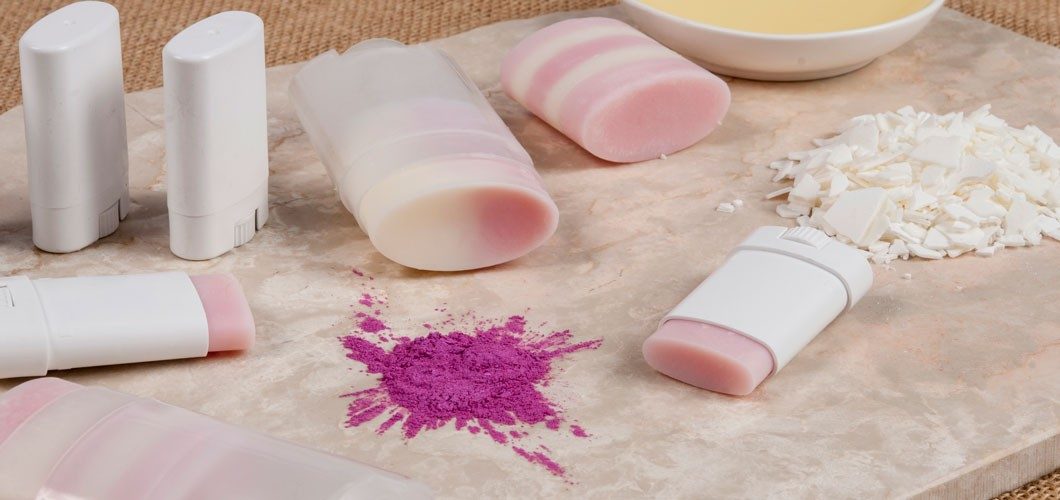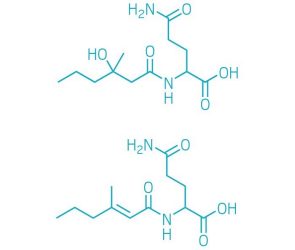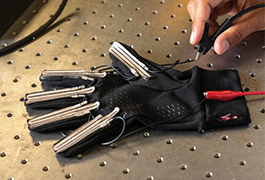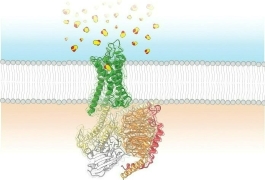Polymer Nanoparticles Block Underarm Odors
by Neil Savage, for C&EN

Polymer nanoparticles could provide a new way to fight underarm odor without disturbing the balance of skin bacteria or causing irritation (ACS Appl. Bio. Mater. 2019, DOI: 10.1021/acsabm.9b00388).
Underarm smell is mainly caused by a couple of volatile fatty acids, (E)-3-methyl-2-hexenoic acid and 3-hydroxy-3-methyl-hexanoic acid. They are produced when bacteria living on the skin break down precursor molecules—glutamine conjugates of these fatty acids— that are found in sweat; by themselves, these precursors have no odor. “When bacteria cleave them into smaller molecules, they start to smell. That is where body odor comes from,” says Karsten Haupt, a nanobiotechnologist at the University of Technology of Compiègne.
Typical deodorants tackle the stink by going after the bacteria with a bactericide such as triclosan or chlorhexadine. But researchers worry using those may disrupt the balance of healthful bacteria on the skin or lead to the evolution of resistant bacteria. Antiperspirants, on the other hand, contain aluminum salts to stanch the flow of sweat from the pores. But that can lead to skin irritation, and some people want to avoid products that block pores with these ingredients.
The new approach relies on molecularly imprinted polymers (MIPs). MIPS are made by combining a template molecule with monomers and free radical species to induce polymerization. As the polymer forms, molecular interactions mold it around the template molecule. Removing the template leaves behind a polymer shaped to bind to molecules that resemble the template. MIPs have been used for years in applications such as biosensors and immunoassays.

Aided by funding from L’Oreal, Haupt and Bernadette Tse Sum Bui, a research engineer at France’s National Center for Scientific Research, showed in 2016 that they could build MIPs that capture molecules involved in underarm odor (Angew. Chem., Int. Ed. 2016, DOI: 10.1002/anie.201602076). The researchers created MIPs about 600 nm in diameter that could bind to the glutamine group in the odor precursor molecules. That binding made it impossible for bacteria to access the precursors, so they couldn’t produce the smelly breakdown products. The bacteria can still use other components of the sweat as a food source.
For the new study, the researchers tested the biocompatibility of the MIPs by culturing three types of skin bacteria in the presence and absence of MIPs. Growth rates were the same, suggesting the MIPs do not alter the skin microbiome. They also mixed MIPs in with cultured skin cells, then looked to see whether the cells had produced cytokines, a marker of inflammation. They did not. Haupt says that shows the material is safe for both skin and bacteria.
Ken Shimizu, a chemist at the University of South Carolina who works on MIP-based sensors, says factors that make MIPs unsuitable for many pharmaceutical applications, such as their inability to permeate membranes, are actually advantages for this application. “This is a clever use of MIPs,” he says. “The principle of using benign ways of modifying the behavior of bacterial products without killing them has great potential.”




